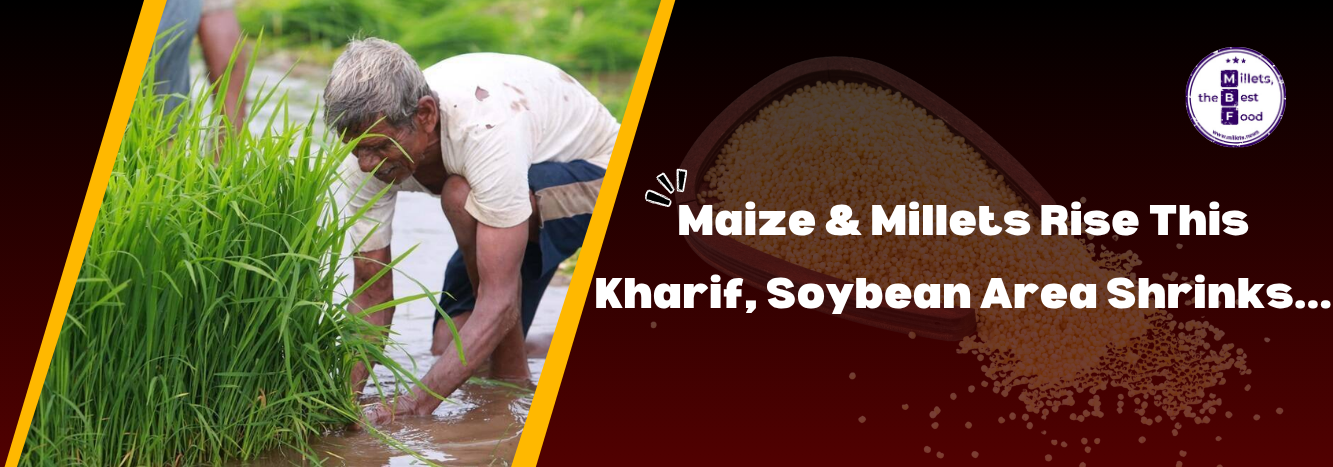
The 2025 kharif season is witnessing notable shifts in crop trends across India. While maize and millets are expected to gain a larger share of cultivated area, soybean coverage is likely to decline. Industry experts note that nearly 90–95% of sowing is already complete, with only pockets in states like Chhattisgarh, Rajasthan, and parts of southern India still planting. Seed sales have concluded, but farmers continue procuring crop protection inputs, reflecting positive market sentiment supported by favorable minimum support prices (MSP) and good rainfall.
Agricultural leaders highlight strong traction in staples like rice and maize, fueled by timely monsoons and adequate input availability. Maize in particular is showing robust growth, with acreage potentially rising over 15% year-on-year, largely at the expense of cotton and soybean. Millet cultivation is also expanding, especially in Haryana and Rajasthan. While cotton coverage varies by region, with declines in Gujarat and Maharashtra but gains in Telangana and Andhra Pradesh, the national acreage is expected to remain close to last year’s levels of 113 lakh hectares.
The season also reflects the increasing impact of climate patterns on crop viability. In Assam, mixed fields of paddy, okra, chillies, and gourds show both resilience and vulnerability. Okra, for instance, suffers from excessive rainfall, highlighting the growing need for climate-resilient varieties. Farmers are adapting their strategies, with some shifting from soybean to maize and expanding pulse acreage.
Labour shortages remain a key challenge, driving higher herbicide sales, which have surged by 20% overall and 40% for some companies like CCPL. With supportive MSPs encouraging greater planting activity, mechanization and chemical solutions are becoming essential to manage larger sown areas efficiently. Despite some setbacks in pulses and vegetables due to excessive rain in Maharashtra and erratic rainfall in Rajasthan affecting oilseeds, the monsoon has generally been favorable, enabling calculated risk-taking by farmers.
Market trends also show reduced chilli cultivation due to lower prices, with more realistic yield numbers expected in the second quarter. The crop protection industry is forecast to grow below 10% this fiscal, except for herbicides, which are likely to maintain strong momentum. Local and resilient varieties, such as Assam’s ghee kosu taro, are gaining value for their adaptability to changing weather and potential to secure future food supply.
Overall, kharif 2025 is shaping up as a season of strategic shifts, with maize and millets emerging as strong gainers, soybeans losing ground, and climate adaptation becoming central to agricultural decision-making.
© 2023 - 2025 Millets News. All rights reserved.